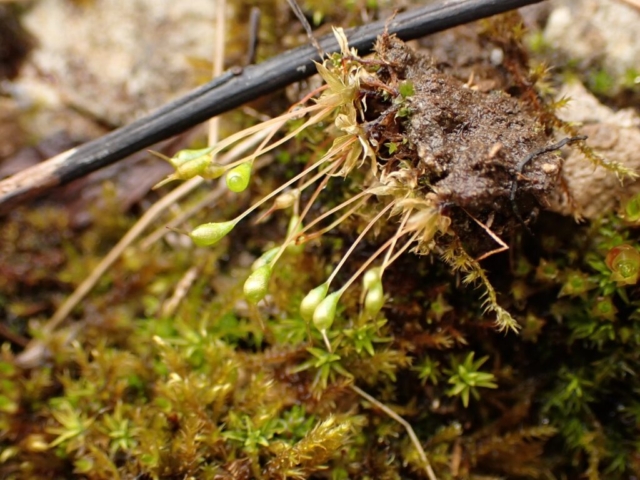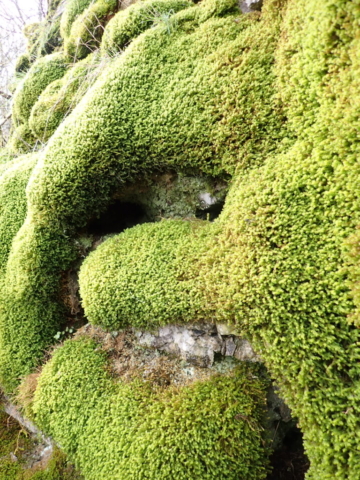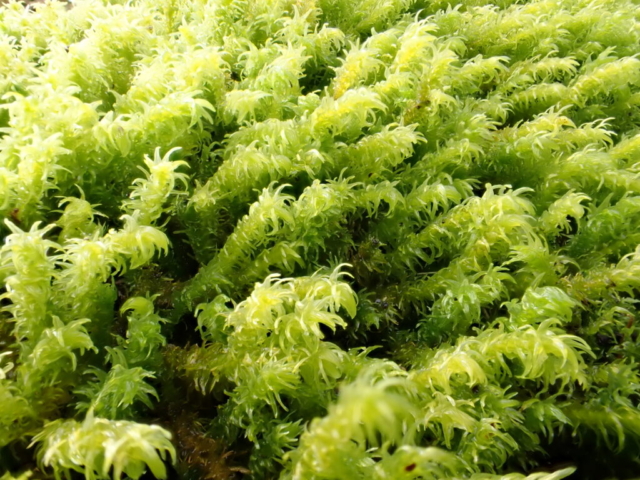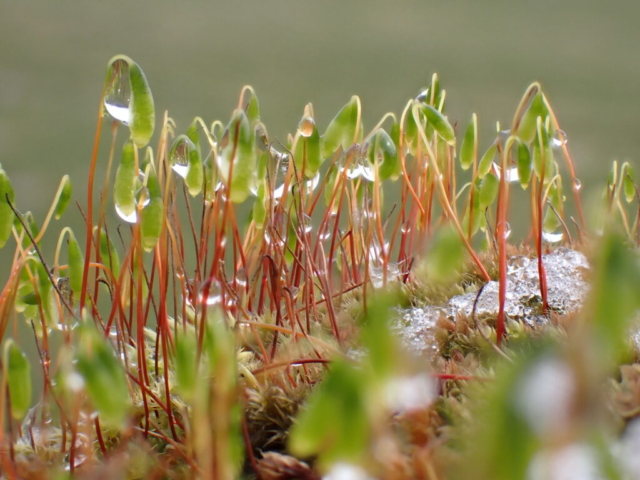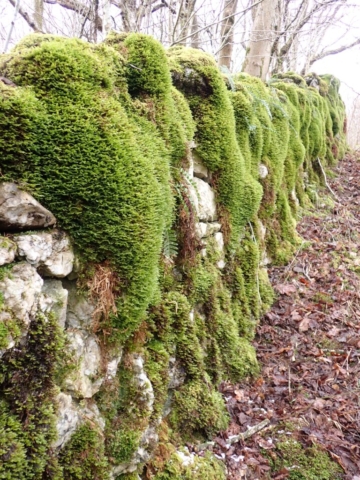If there is one thing, I’m less familiar with than writing a blog post it’s limestone bryophytes. So, I was really pleased that ‘team Bryo’ for the day was a good six of us and included both the Cumbrian VC recorders for support. Our target for the day was to explore the SD5678 monad of the SD57U Tetrad, including the rakes and Blasterfoot Gap areas. With only 26 species recorded for the Tetrad and only three reported for the monad, confidence we could add to the list was good.
With the temperature nudging up to 0ºC and the thin cover of snow melting we left the village by the post office and headed up the track. Our first success … making it out of the car parking area! Of course, it didn’t last, and we barely made it through the gate into the square before being arrested by a good selection of finds on the limestone dry walls. Porella platyphylla, Homalothecium serieum, Brachythecium rutabulum, Neckera crispa, Encalypta streptocarpa and a few more were on the list by the time we were all through the gate. Ctenidium molluscum at least I recognised as characteristic of limestone.
Bearing left and skirting the southern edge of the square we checked off some commoner grassland species that you usually can’t fail to find anywhere. Pausing at some large boulders we got our first spot of Fissidens dubius in its typical habitat of dry limestone.
Dropping off the path for a short detour to view a small cliff overhung by Ash trees brought our sight of the day of Anomodon viticulosus covering huge areas in extensive ‘tufts’. The nearby wall sported cushions of Syntrichia ruralis with its long hair points making the leaves look far narrower than they actually are. The top of the wall sparkled with melted snow hanging in drops from spore capsules.
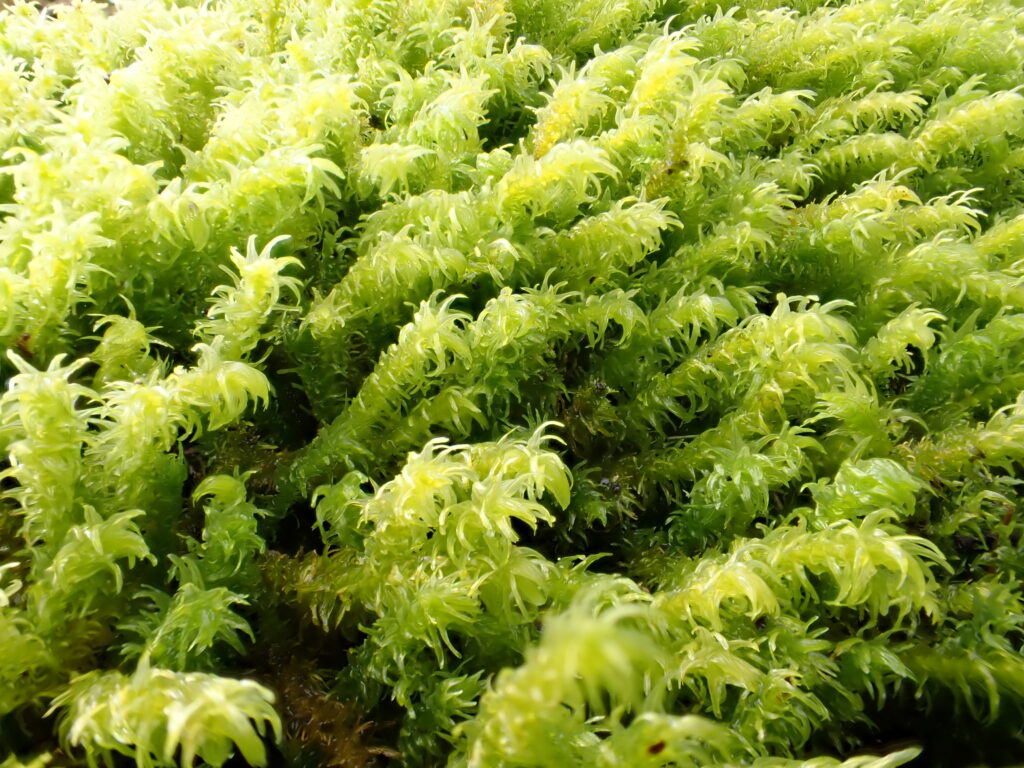
Back up and across the path we then explored some large, sloped, exposed slabs of rock with a number of limestone and disturbed ground species being found. Most of these, apart from Tortella tortuosa, had names I’ve never even heard of before as there is little limestone near my home. Quite a few, like Entosthodon Muehlenbeckii, and the Anomobryum julacea I spotted looking like little upright strands of embroidery thread, don’t key directly in the field-guide so the support of Andy was invaluable here.
With everyone cooling down and terrain looking similar we decided to cover a bit of ground and warm up. Passing the lichenologists admiring a well camouflaged ‘The Engrailed’ (Ectropis crepuscularia) moth, we turned up the slope and found the wall festooned with huge swags of Neckera crispa. Some patches of Rhytidiadelphus triquestris were seen near the wall base.
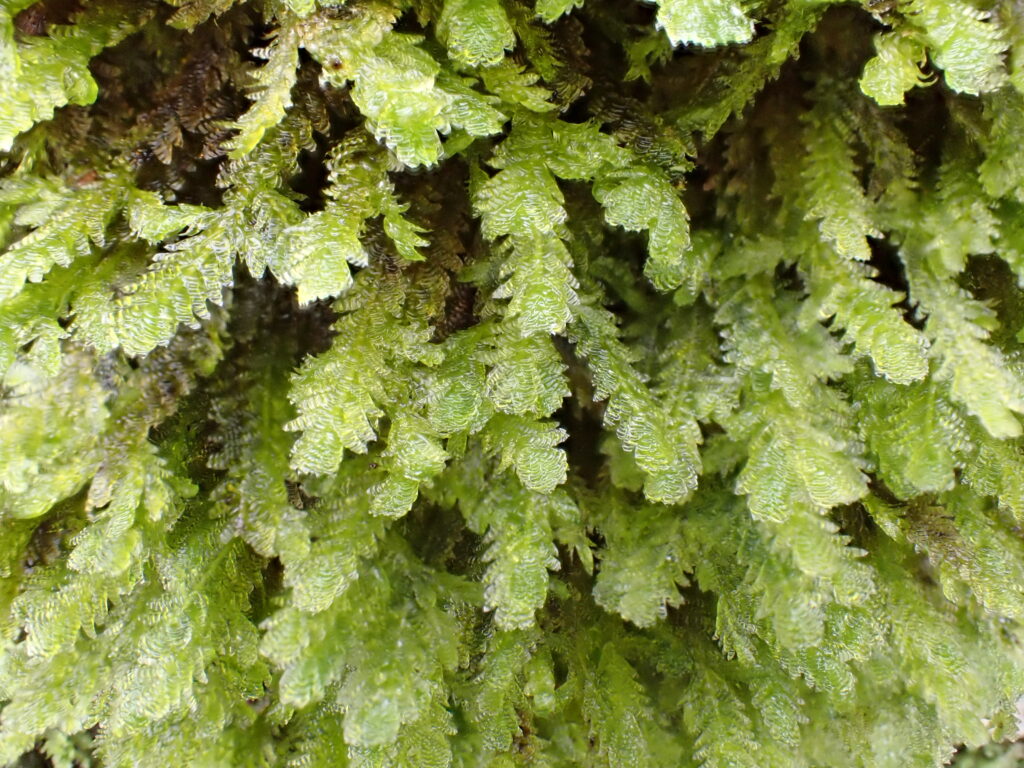
Heading back out across the slope we passed some luxuriant Homalothecium lutescens on the way to more open ground. Further across we ‘rediscovered’ the only targeted find for the day: Rhytidium rugosum. Its characteristic ‘wrinkled’ leaves giving it a more matt appearance then the similar coloured Hypnum lacunosum. Finding ourselves with a good view we settled for lunch surrounded by tufts of Sesleria caerulea, Blue Moor-grass, just beginning to flower.
We continued up the slope after lunch but dropped down to the base of one of the limestone rakes in search of different habitat. Here we found some patches of Marchesinia mackaii. Emerging at the top of the slope onto an area of calcareous grassland studded with anthills we could see where moles and badgers had been busy. With nothing of much note, most of the anthills were found to be topped with Bryum pallens.
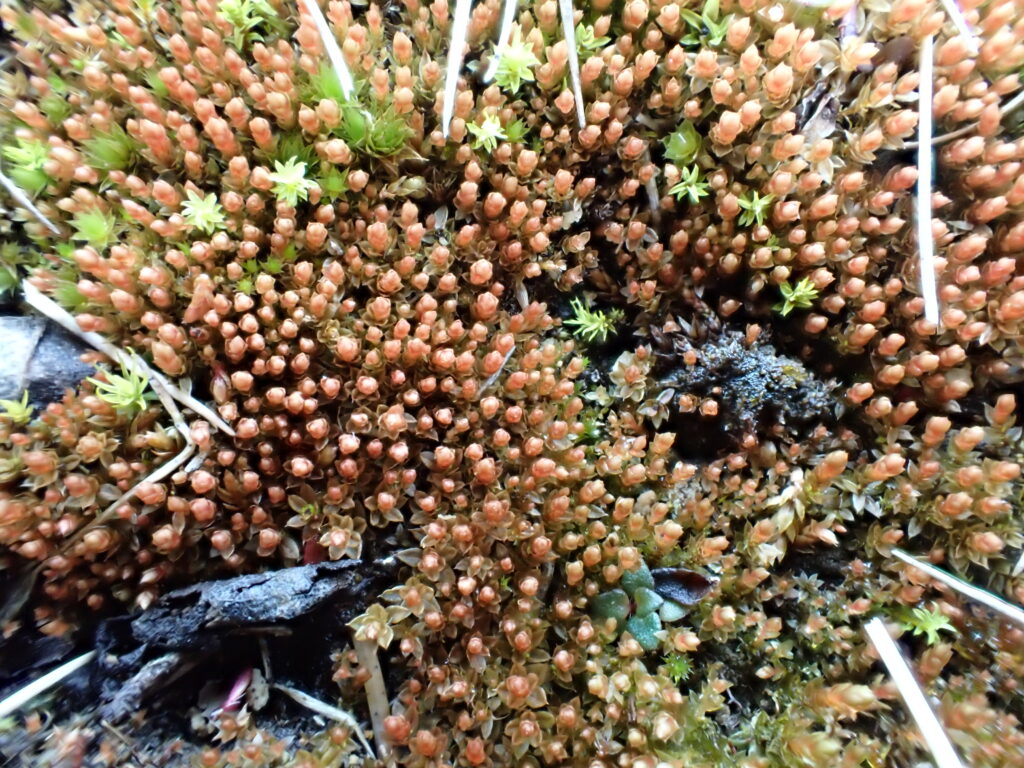
A cool breeze saw us opt for a drop in elevation and some cover, so we dropped down over the brow and around to the path running down through Oak woodland to the church. Here we found it unusual that nearly all the fallen, well-rotted wood was almost devoid of bryo flora, though we did eventually find some of the usual suspects. The rocks in the wood were absolutely and extensively carpeted with deep swathes of Thamnobryum alopecurum almost to the exclusion of anything else. But not quite, as we did find a few good-sized patches of the furry Apometzgeria pubescens.
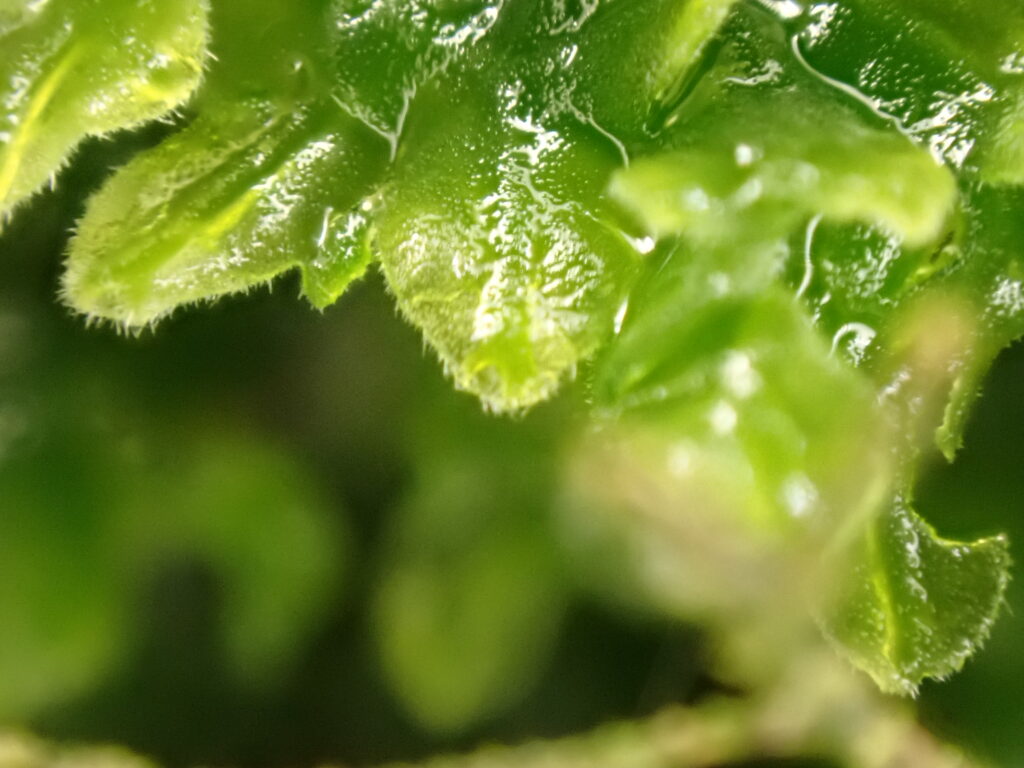
With the forecast rain beginning to settle we made our way back from the Church to the village starting point, admiring the just about to flower Moschatel on the bank tops. Another great trip out, and subject to confirmations a likely tripling, or better, of the species recorded for the tetrad.
Text: Ian Burrow. Photos: Ian Burrow and Clare Shaw
I’d just like to add as a footnote that the Entosthodon muehlenbeckii was an exciting find. A limestone specialist with only 28 records in the BBS atlas (mysteriously, many more on NBN but many of them seemed ancient), we found this in large quantities on the rock slabs and a couple of patches later on, on limestone pavement. Previously recorded in a neighbouring monad this must be a real stronghold for it.




